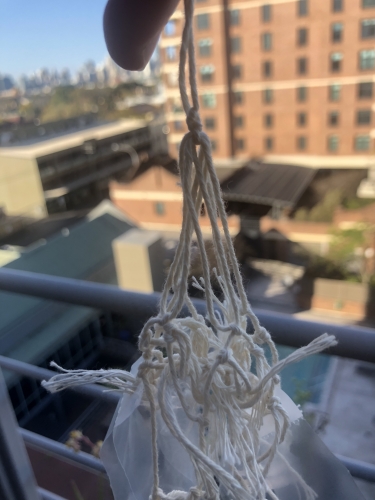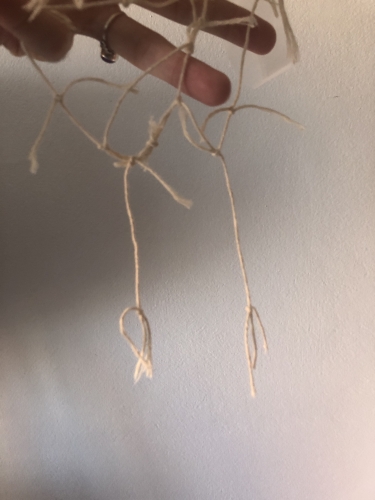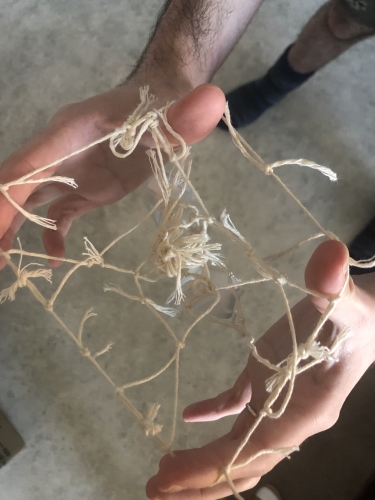Theme: Play and Place
Project:
https://youtu.be/mfrEpVlxkWE
Context:
This week, the ‘place’ within the theme that I wanted to focus on was my balcony. I wanted to create something which played with the main features of this place: it’s height, city view, the feeling of fresh air and its inhabitants. My goal with this project was to create something which utilised both these visible and invisible features so that they compliment each other, and their relationship becomes apparent in a whimsical way.
To gain a broader understanding of how these features have been used in installations, I researched different art which used wind. I found an installation done by Tim Knowles in Sydney (2014) made of three parts: WindGrid, WindLab and WindWalk. These public artworks were aimed at changing perceptions of the city environment by incorporating natural elements like wind. I was particularly interested in “WindGrid”, where metal “paper airplanes” were suspended in a grid above the ground and shifted direction based on the wind, dancing and casting shadows. This installation highlights something about the city which is felt, but not seen - wind. “WindWalk” was also interesting, as it let the public use wind harnessing devices to guide their walks. These devices looked like big paper airplanes and were worn on the users heads. The devices would also record the walks and would broadcast the walks on a screen. Again, I find it interesting the way this project connected people through something invisible in a whimsical way. These installations were all site specific because they focus on connecting the audience to the place around them in a new way. This use of wind became a part of the way I conceptualised Sydney’s skyline. I wanted to magnify this, and focus on the feeling and visual of the balcony together.
When I found the ring structure to create my sculpture idea, I was reminded of the flags flown on Children’s Day in Japan. The flags (koinobori) are tubular and usually painted to look like carp. I liked that these windsocks created a whimsical skyline, and also utilised air and height to do so. This animal motif and 3D structure inspired my construction, and led to me creating the bird wind puppet.
Method:
To create these installations I used:
-
Binder Rings
-
Plastic Display Sheets
-
Kitchen Twine
-
Sharpie
-
Scissors
The first step for all the objects was cutting the plastic sleeves. I cut the sleeve in strips around the binder holes. The thickness of the strips varies depending on the size of the drawing I planned on doing.
Next, I would do a drawing on the plastic sleeve with the sharpie. It is important the drawing is horizontal along the strip, so that it follows the skyline when the wind blows.
Then, to attach it to the ring I tied the twine to the binder hole of the plastic sleeve. I then tied the other end of the twine to the binder rings. I would proceed to do so for all the strips I wanted to attach to the ring, making sure to space them out. You can also vary the length of twine to change the height of each strip.
The process for creating my wind bird was less structured. I wanted to create something more 3D, so I started by making a netting structure around the ring. I then removed the ring and pulled the ends together to create a beak. I used the sleeve strips to form wings, and through trial and error made another net to be the body. I tied twine on the ends to create legs.
Reflection:
I am glad I spent time trying multiple different techniques, as it helped me develop an understanding of the capabilities of these materials in relation to the features of the balcony. It was interesting to see that the most effective way to display the image was using just one plane for the drawing. I had not focused on the movement of wind when making the different designs, and it was only when I tested the designs did the differences become most apparent.
I am most proud of the bird structure, inspired by the magpie which visits my balcony. It has life and structure when the wind is and isn’t blowing, becoming a part of the narrative of the place. The other prototypes I made were interesting, but I think could be more pertinent with a greater attachment to the history and community of the area. I think if this was a larger installation, it would be interesting to involve local communities and especially indigenous culture to potentially create a wind structure communally.


